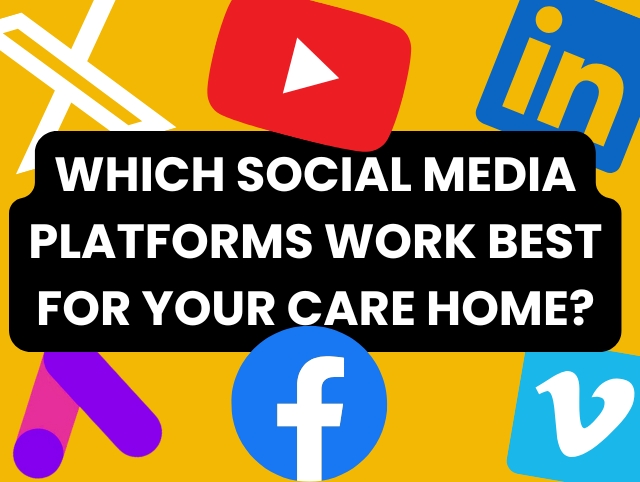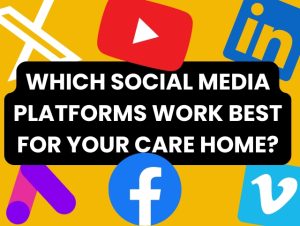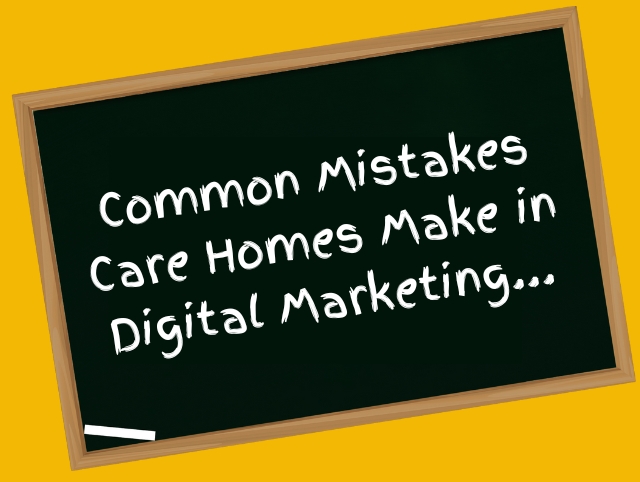
How to Leverage User-Generated Content for Social Proof

Key Takeaways
- User-generated content builds trust by showing real people using your services
- UGC is 2.4 times more likely to be viewed as authentic compared to brand-created content
- Testimonials, reviews, and social media mentions are the most effective forms of UGC
- Encouraging UGC requires clear calls to action and recognition of contributors
- Properly managed UGC can reduce marketing costs while increasing engagement by up to 28%
- Care homes can use resident and family stories to create powerful social proof
Outline
- Understanding User-Generated Content and Social Proof
- Types of UGC That Work Best for Care Homes
- How to Encourage Residents and Families to Create Content
- Showcasing UGC Effectively on Your Website
- Using UGC in Social Media Marketing Strategies
- Legal Considerations When Using User-Generated Content
- Measuring the Impact of UGC on Your Care Home Marketing
- Case Studies: Successful UGC Campaigns in the Care Sector
Understanding User-Generated Content and Social Proof
What exactly is user-generated content? Well, it’s pretty much what it sounds like – content that your users make, not you. This includes things like reviews, photos, videos, testimonials, and social media posts that your residents, their families, or even your staff create about your care home. And lemme tell you, this stuff is gold for marketing!
Social proof is that psychological thing where people copy what others do, especially when they’re not sure what to do themselves. When someone’s looking for a care home for their mum or dad, they’re gonna trust what other families say way more than your fancy brochure. That’s just how we humans work.
The connection between UGC and social proof is super strong. When potential residents or their families see real people sharing positive experiences about your care home, they think, “Hey, if it worked for them, it might work for us too!” This is way more powerful than you just saying how great you are.
According to research, content created by actual users is viewed as 2.4 times more authentic than content created by brands. That’s huge! In the care home industry, where trust is everything, authenticity can make or break your marketing efforts.
Social media marketing for care homes can be dramatically improved by incorporating UGC. When you share content created by your residents and their families, you’re not just marketing – you’re building a community and showcasing real experiences.
Some benefits of using UGC for social proof include:
- Building trust with potential residents and families
- Creating a sense of community around your care home
- Reducing marketing costs (cuz your users are creating content for you!)
- Increasing engagement on your social media platforms
- Providing authentic insights into daily life at your facility
Remember, people don’t just want to see glossy photos of your building – they wanna see the real experiences of people living there. UGC gives them exactly that window into your care home community.
Types of UGC That Work Best for Care Homes
Not all user-generated content is created equal, especially when it comes to care homes. Some types of UGC are super effective for building social proof, while others might not work as well for this specific industry. Let’s look at the best types for care homes.
Testimonials and reviews are probably the most powerful form of UGC for care homes. When families share their experiences about how their loved ones are being cared for, it resonates deeply with potential residents and their families. These can be collected through Google reviews, on your website, or even as video testimonials which are particularly impactful.
“The staff at Sunshine Care Home have become like family to my mother. She’s happier now than she’s been in years!” – This kind of authentic feedback is worth its weight in gold.
Photo and video content showing residents enjoying activities, celebrating birthdays, or participating in community events provides a genuine glimpse into daily life. This type of content helps potential residents visualize themselves in your care home and reduces anxiety about the transition.
Email marketing for care homes can feature UGC by including resident stories or family testimonials in your newsletters. This adds authenticity to your communications and reinforces the community aspect of your care home.
Social media mentions and tags are another valuable form of UGC. When family members tag your care home in their posts about visiting their loved ones or attending events, it creates organic social proof that reaches their entire network.
User-generated stories about special moments or milestones achieved while in your care can be particularly moving. For example, a story about a resident who rekindled an old hobby or made new friendships can illustrate the quality of life you provide.
Staff testimonials and stories shouldn’t be overlooked either! Your team members can provide unique insights into the care philosophy and daily operations that potential residents and families might not otherwise see.
The best part? Different types of UGC work together to create a comprehensive picture of your care home. A mix of reviews, photos, videos, and stories provides multi-dimensional social proof that addresses different concerns and questions potential residents might have.
How to Encourage Residents and Families to Create Content
Getting people to create content for you isn’t always easy, but with the right approach, you can encourage a steady stream of valuable UGC. The trick is making it simple, fun, and rewarding for your residents and their families.
First things first, ya gotta ask! Many care homes miss out on UGC simply because they don’t explicitly invite residents and families to share their experiences. Create clear calls to action on your website, in your facility, and in communications with families. Something like “Share your Sunshine Care Home story with us!” can work wonders.
Make the process super easy. Nobody wants to jump through hoops to share content. Provide simple ways for people to submit photos, videos, or testimonials – maybe through a form on your website, via email, or even through a dedicated hashtag on social media.
Blogging for care homes can include invitations for resident and family contributions. You might feature a “Resident of the Month” or “Family Story” section where you showcase user-generated content with permission.
Create content-worthy moments! Organize special events, celebrations, or activities that naturally inspire people to take photos and share experiences. A garden party, art exhibition of residents’ work, or holiday celebration can all generate wonderful content.
Consider running contests or campaigns specifically designed to collect UGC. For example, a “Share Your Favorite Memory” campaign could encourage families to submit stories and photos of special moments at your care home.
Always recognize and thank contributors. When someone shares content, acknowledge their contribution publicly (with permission) and express gratitude. This not only makes the contributor feel valued but also encourages others to share their own content.
Provide prompts or themes to help inspire content creation. Some people might want to share but aren’t sure what would be helpful. Suggestions like “Tell us about your first day” or “Share a moment that made you smile” can provide direction.
Train your staff to identify and capture special moments. Your team is on the front lines witnessing beautiful interactions and achievements every day. Empower them (with appropriate permissions) to document these moments for sharing.
Remember that some residents and families might have privacy concerns. Always respect these boundaries and have clear permission processes in place. Offering options for anonymous testimonials or partial identification can help address these concerns.
Showcasing UGC Effectively on Your Website
Once you’ve collected all this amazing user-generated content, you need to showcase it effectively on your website. Your website is often the first impression potential residents and families get of your care home, so using UGC strategically here can make a huge difference.
Create a dedicated testimonials page that features a mix of written reviews, video testimonials, and photos from residents and families. Organize these by themes like “Quality of Care,” “Activities,” or “Staff Relationships” to help visitors find relevant social proof for their specific concerns.
Don’t hide your UGC in some corner of your website! Feature select testimonials and resident stories prominently on your homepage where visitors can’t miss them. A rotating banner of quotes or a featured story section can be really effective.
Care home website design should incorporate UGC elements throughout the user journey. Consider how different types of content might address specific questions or concerns at various stages of the decision-making process.
Use real photos of residents (with permission) instead of stock photos whenever possible. Authentic images of real people enjoying life at your care home are infinitely more powerful than generic stock photography that visitors can spot a mile away.
Create a “Day in the Life” section featuring resident-generated or family-generated content that shows what daily life is really like at your care home. This helps potential residents visualize themselves in your community.
Incorporate UGC into your FAQ section. Answering common questions with a combination of factual information and resident/family experiences provides both the information seekers need and the social proof that builds trust.
Consider creating an interactive gallery or map of your facility where visitors can click on different areas to see photos and read stories about activities and experiences that happen in each space.
Don’t forget to keep your UGC fresh! Regularly update the content to show that you have a continuous stream of positive experiences and happy residents. Outdated testimonials from years ago won’t have the same impact as recent ones.
Make sure your UGC is mobile-friendly too. Many people will be browsing your website on phones or tablets, especially family members who are researching care options, so ensure that videos, galleries, and testimonials display properly on all devices.
Using UGC in Social Media Marketing Strategies
Social media is where user-generated content really shines! It’s the perfect platform for sharing authentic experiences and building community around your care home. Let’s explore how to effectively use UGC in your social media strategy.
First up, create branded hashtags specific to your care home. Encourage residents, families, and staff to use these hashtags when posting about their experiences. This makes it easy to find and reshare content while building a searchable collection of experiences related to your facility.
Regularly feature UGC in your social media posts. This could be resharing a family member’s post about their visit, posting a resident’s artwork with their permission, or creating a “Testimonial Tuesday” feature where you share positive feedback.
Social media for care homes becomes much more engaging when it includes real stories. People connect with authentic content far more than they do with corporate messaging or stock photos.
Create themed campaigns that encourage specific types of UGC. For example, a “Moments of Joy” campaign could invite families to share photos of happy moments with their loved ones at your care home. This not only generates content but also focuses attention on positive experiences.
Use UGC in your social media advertising. Testimonials and resident stories make for compelling ad content that performs better than traditional advertising approaches. Just make sure you have proper permissions before using anyone’s content in paid promotions.
Engage meaningfully with UGC by commenting, thanking contributors, and asking questions. This shows that you value the content people share and encourages ongoing participation in your community.
Consider creating a resident or family social media ambassador program where interested participants help generate and share content about life at your care home. This can be particularly effective if you have residents or family members who are already active on social platforms.
Share behind-the-scenes content created by staff (with appropriate permissions) to give an authentic look at daily life and care practices. This type of content helps build trust by showing transparency in your operations.
Don’t just focus on the positive! While you obviously want to highlight good experiences, authentic content sometimes includes challenges that were overcome or improvements made based on feedback. Sharing how you’ve responded to suggestions shows that you’re committed to continuous improvement.
Remember to cross-pollinate your UGC across platforms. Content that works well on Facebook might also be perfect for your Instagram or LinkedIn with slight modifications for each platform’s unique audience and format.
Legal Considerations When Using User-Generated Content
When using UGC, you gotta be super careful about the legal stuff. It’s not just about getting great content – you need to make sure you’re using it properly and respecting everyone’s rights. This is especially important in care homes where privacy and dignity are top priorities.
Always, always, ALWAYS get explicit permission before using anyone’s content. This is non-negotiable. Create clear permission forms that explain exactly how you plan to use the content, where it will appear, and for how long. This is particularly important for photos or videos showing residents.
For residents with dementia or cognitive impairments, you’ll need to follow additional protocols. This typically means getting permission from their legal representative or family member. Document this process carefully to protect everyone involved.
Compliance and legal considerations in care home marketing should be a top priority when using UGC. The care sector has specific regulations about marketing and communications that must be followed.
Create a clear attribution policy. When using someone’s content, decide how you’ll credit them – by full name, first name only, or anonymously. Always follow the contributor’s preferences regarding attribution.
Be aware of copyright issues. Just because someone tags your care home in a post doesn’t automatically give you the right to use their photo or video in your marketing materials. Always get specific permission for each use.
Consider creating a UGC policy that outlines how you collect, use, and share user-generated content. Make this policy accessible to residents, families, and staff so everyone understands the process.
Be mindful of confidentiality. Even with permission, be careful about sharing content that might inadvertently reveal sensitive information about a resident’s health condition or personal circumstances.
Remember that permissions can be revoked. If a resident or family member changes their mind about having their content used, respect their decision immediately and remove the content as requested.
Keep detailed records of all permissions obtained, including:
- Who gave permission
- When it was given
- What specific content it applies to
- How the content can be used
- Any time limitations on the permission
When in doubt, consult with a legal professional who specializes in healthcare marketing. The legal landscape around UGC is complex and constantly evolving, so professional guidance is invaluable.
Measuring the Impact of UGC on Your Care Home Marketing
How do you know if all this UGC stuff is actually working? Measuring the impact is crucial to refine your strategy and demonstrate the value of your UGC efforts. Let’s look at how to track and analyze the effectiveness of user-generated content.
Start by establishing baseline metrics before implementing a UGC strategy. This might include website traffic, engagement rates on social media, inquiry numbers, and conversion rates. Without this starting point, you won’t be able to accurately measure changes.
Track engagement metrics specifically related to UGC posts versus your regular content. Are posts featuring resident testimonials getting more likes, comments, and shares than your standard posts? This direct comparison can reveal the added value of UGC.
Digital marketing strategies for care homes should include specific KPIs for UGC campaigns. These might include the number of submissions received, engagement with UGC content, or conversion rates from UGC-heavy pages.
Monitor the impact on your website metrics. Pages featuring UGC often have longer visit durations and lower bounce rates because visitors find the authentic content more engaging and trustworthy. Use Google Analytics to track these patterns.
Implement specific tracking for UGC-driven conversions. This could be as simple as adding a “How did you hear about us?” field to your inquiry form that includes an option for “Resident testimonials” or “Family recommendations.”
Conduct regular surveys with new residents and families to understand the role that UGC played in their decision-making process. Questions like “Did resident stories influence your decision?” can provide valuable insights.
Compare cost-effectiveness of UGC versus other marketing channels. UGC typically costs less to produce than professional content while often delivering better engagement rates, making it highly cost-effective when done right.
Track sentiment analysis in the comments and responses to your UGC. Are people responding positively? Are they sharing their own similar experiences? This qualitative data can be just as valuable as quantitative metrics.
Look for patterns in the types of UGC that perform best. You might find that video testimonials drive more inquiries while resident activity photos generate more social media engagement. Use these insights to refine your content strategy.
Don’t forget to measure internal benefits too! UGC often boosts staff morale and resident satisfaction by celebrating and sharing positive experiences. Consider including questions about this in staff and resident satisfaction surveys.
Some key metrics to track include:
- Engagement rate on UGC posts vs. brand-created content
- Website conversion rate from pages featuring UGC
- Number of UGC submissions received
- Sentiment analysis of comments on UGC
- Inquiry source attribution to UGC
- Cost per acquisition comparison between UGC and other channels
Case Studies: Successful UGC Campaigns in the Care Sector
Learning from real examples is one of the best ways to understand how UGC can work for your care home. Let’s look at some success stories from the care sector that demonstrate the power of user-generated content for building social proof.
A care home ran a “Family Stories” campaign where they invited families to share their experiences of having a loved one in their care. They collected these stories through a simple online form and featured them on dedicated lpages for each facility. The result? A 24% increase in inquiry-to-tour conversion rates for locations with multiple family stories.
“My mother has been atthe care home for three years now, and the transformation in her happiness has been amazing. She’s made friends and found purpose again.” This kind of authentic testimony connected deeply with prospective families.
How to build a thriving social media community for care homes was exemplified by another care home which created a resident-led Instagram account. With staff support, interested residents shared photos and brief stories about their daily activities. This resident-generated content provided an authentic window into care home life and increased engagement with family members by 78%.
A small independent care home in Yorkshire implemented a “Wisdom Wall” where residents shared life advice and stories. These were photographed and shared on social media with the residents’ permission. The campaign went viral locally, with one resident’s advice being shared over 1,000 times. This led to a significant increase in community awareness and several new inquiries specifically mentioning the Wisdom Wall.
Another campaign encouraging families to share photos and stories of how they’d personalized their loved one’s rooms. This campaign not only provided authentic content but also gave practical ideas to prospective residents about making the transition to care home living. The campaign resulted in a 32% increase in website dwell time on pages featuring these stories.
A care home group in Scotland created a “Day in the Life” video series where residents voluntarily recorded aspects of their daily routine with staff assistance. These authentic glimpses into care home life were shared on YouTube and Facebook, resulting in a 45% increase in inquiry calls with many specifically mentioning the videos.
Another care home implemented a review strategy that encouraged families to leave Google reviews after positive experiences or milestone events. By systematically requesting reviews at the right moments, they increased their Google review count by 156% in six months, significantly improving their local search visibility.
What can we learn from these examples?
- Successful campaigns have clear themes and simple submission processes
- The most effective addresses common concerns of prospective residents
- Campaigns that highlight resident personalities and stories create emotional connections
- Campaigns work best when integrated across multiple channels (website, social, email)
- The most successful care homes make the process an ongoing strategy, not a one- time campaign
Frequently Asked Questions
How do I get permission to use resident photos and stories?
Create a clear, simple permission form that explains exactly how you’ll use the content. For residents with cognitive impairments, work with their legal representatives. Keep these permissions on file and respect any limitations or time constraints specified.
What types of UGC work best for care homes?
Testimonials from families, resident stories, photos of activities and celebrations, and staff insights tend to work best. Video content is particularly powerful, especially testimonials and “day in the life” style content that shows the care home atmosphere.
How can we encourage families who aren’t tech-savvy to contribute UGC?
Offer multiple ways to contribute, not just digital ones. Have comment cards available during visits, set up a simple recording station for video testimonials during family events, or have staff help capture stories during conversations. You can then digitize these contributions with permission.
Is it better to use professional photos or authentic UGC that might not be as high quality?
Both have their place. Professional photos are important for certain marketing materials, but authentic UGC, even if less polished, often creates stronger emotional connections and trust. A mix of both tends to be most effective.
How often should we post UGC on social media?
Aim for at least 30-40% of your social content to be user-generated. This provides a good balance between professional communications and authentic voices. On platforms like Instagram and Facebook, UGC often performs better than branded content.
What legal risks should we be most concerned about when using UGC?
The biggest risks involve privacy violations, using content without proper permission, and inadvertently sharing protected health information. Always get explicit permission, be careful about what’s visible in photos/videos, and consult with legal professionals when developing your UGC policy.
How can we measure if our UGC strategy is actually working?
Track engagement metrics on UGC versus non-UGC posts, monitor website conversion rates on pages featuring UGC, survey new residents about what influenced their decision, and track inquiry sources to see if people are mentioning testimonials or resident stories.
What should we do if someone asks us to remove their content after we’ve published it?
Remove it immediately and apologize for any inconvenience. It’s important to respect people’s changing wishes about their content, even if you had permission initially. This builds trust and shows respect for your community member
Care Home Marketing Disclaimer
Care Home Digital Marketing provides marketing services specifically designed to support care homes with their digital presence, branding, and promotional strategies.
We are marketing specialists, not care providers or healthcare professionals. Nothing on this website, in our content, or within our services should be interpreted as advice or guidance related to the delivery of hands-on care, medical treatment, or clinical practices.
All marketing materials and campaigns created by us are intended solely to enhance visibility, engagement, and communication for care sector businesses.
While we are not involved in the provision of care, we do have personal experience of loved ones living with dementia, as well as those we have sadly lost due to dementia-related illness.
This personal connection drives our deep respect for the care sector and fuels our commitment to helping care homes share their vital work with the world.
For matters relating to the delivery of care, we strongly advise consulting qualified care professionals or relevant regulatory bodies.










